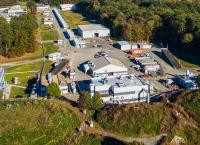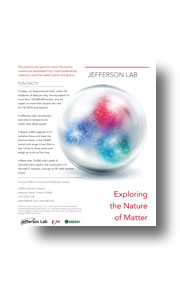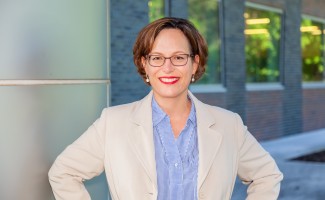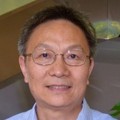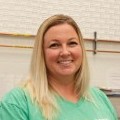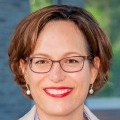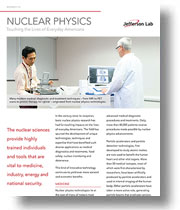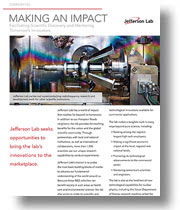Engineer Calls Upon Communication, Precision to Support Physicists at Lab and Beyond
Jefferson Lab Engineer Katherine Wilson knows that precision is indispensable in her field. Yet, getting to the point where precision matters takes constant communication. The French major, former NASA co-op master’s student and one-time shipyard engineer recognizes that her role requires an amalgam of her finely tuned skills, which extend beyond engineering.
Wilson not only develops equipment that makes the lab’s own Continuous Electron Beam Accelerator Facility function, she also collaborates with engineers and scientists around the world to develop components that will be shipped to and installed in the SLAC National Acceleratory Laboratory and Oak Ridge National Laboratory. In her role, conversation matters as much as calculation.
Communication is key element before, during and after engineering
Before Wilson can begin any design, she meets with scientists to understand exactly what equipment they need for their upcoming experiments.
“Generally, the mechanical engineers at the lab support the physicists,” she explains. “The physicists have the big ideas about how to support new science, and the engineers figure out how to make that happen.”
Though she once thought she might major in biology, Wilson loves the creativity and mathematical aspect of the engineering role.
“The scientists understand the theory behind particles and how particle physics works, so they tell us what kind of equipment they need, give us some general requirements, and we work with them to understand the details of what they are trying to do. And we help them achieve that. In other words, we take physical requirements and generate engineering along with concepts and calculations, and then scientists have an actual piece of equipment they can use.”
Building and procuring specialized components
Often, Wilson and her team call upon third-party vendors to manufacture specialized components for their designs.
“Procurement is very complicated,” Wilson explains. “We’re ordering cutting-edge and custom-made components. In some cases, there are only one or two vendors in the world capable of building them. We visit vendors. We talk to them often. We ask questions. We troubleshoot; it’s a collaborative process.”
Then, once a part is manufactured and delivered to the lab, Wilson and her team work through their checklist to make sure each detail is exactly as ordered and properly installed.
“When the products come here, we do quality inspections, coordinate measurements and check and test to make sure we got the product we specified. Then, we assemble the components,” she adds.
That extreme attention to detail must be carefully replicated in sometimes-difficult situations. For example, Wilson has spent the past five years working on the LCLS-II project for SLAC. The Department of Energy has distributed the development responsibilities to both Jefferson Lab and Fermilab. Thus, both labs are working together remotely to build extraordinarily complicated equipment that requires identical construction down to the torque of each screw.
During assembly, precision is crucial.
“Everything matters,” says Wilson. “We have detailed procedures. We care about everything from how much a screw is tightened, to little pieces of dust that may be in a vacuum.”
Creative in orderly ways
In addition to being focused on precision, Wilson values the creativity she gets to practice in her role — and recognizes that she is drawn to projects that have clear boundaries around them.
“I’m creative in orderly ways,” she laughs. “Engineering is a good way to be creative. You get to follow rules, structure and techniques, and you can still come up with something entirely new.”
Not all engineering jobs are as creative as hers, she notes, but the lab is a special environment where engineers need to be able to translate a scientist’s wishes into an entirely unique — and often complex — design within a specific perimeter. She has the same affinity for being creative within a set of boundaries when it comes to her hobbies.
“I also like to cook, and I will come up with ways to make a recipe the way I want it,” she says. “As with engineering, there are rules to cooking. I will garden and do landscaping layouts. I do home projects a lot. For example, I will figure out what I want a room to look like and design it within the set space. I’m creative within structure.”
Wilson is instilling that sense of structure into her three children, aged 12, 13 and 15, by bustling them to sports and music lessons in the evenings. Yet, ever the committed teammate, often during her kids’ practices, Wilson jumps on her laptop to either finish the day’s work or communicate with vendors around the world.
“Sometimes I sit at my computer at 11 p.m., communicating with a Japanese vendor who just came into work,” she says. “We have a lot of work to do.”
By Carrie Rogers


